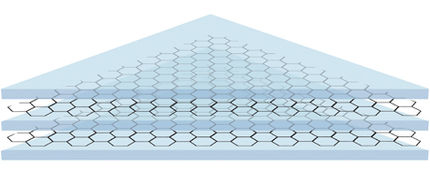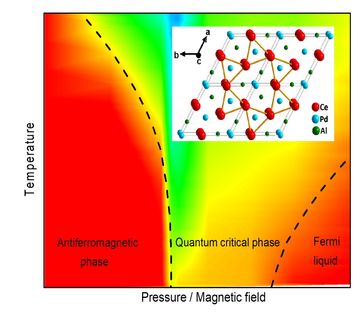Nuclear waste could be reduced by 90 percent
The researchers, from the University of Sheffield's Faculty of Engineering, have shown that mixing plutonium-contaminated waste with blast furnace slag and turning it into glass reduces its volume by 85-95 per cent. It also effectively locks in the radioactive plutonium, creating a stable end product.
The approach could also be applicable to treating large volume mixed wastes generated during the eventual clean-up of the damaged Fukushima plant.
"The overall volume of plutonium contaminated wastes from operations and decommissioning in the UK could be upwards of 31,000 m3, enough to fill the clock tower of Big Ben seven times over," says lead researcher, Professor Neil Hyatt. "Our process would reduce this waste volume to fit neatly within the confines of just one Big Ben tower."
The current treatment method for non-compactable plutonium contaminated wastes involves cement encapsulation, a process which typically increases the overall volume. Hyatt says, "If we can reduce the volume of waste that eventually needs to be stored and buried underground, we can reduce the costs considerably. At the same time, our process can stabilise the plutonium in a more corrosion resistant material, so this should improve the safety case and public acceptability of geological disposal."
Although the ultimate aim for higher activity wastes is geological disposal, no disposal sites have yet been agreed in the UK.
Plutonium contaminated waste is a special type of higher activity waste, associated with plutonium production, and includes filters, used personal protective equipment (PPE) and decommissioning waste such as metals and masonry.
Using cerium as a substitute for plutonium, the Sheffield team mixed representative plutonium contaminated wastes with blast furnace slag, a commonly available by-product from steel production, and heated them to turn the material into glass, a process known as vitrification.
A key element of the research, funded by Sellafield Ltd and the Engineering and Physical Sciences Research Council (EPSRC), was to show that a single process and additive could be used to treat the expected variation of wastes produced, to ensure the technique would be cost effective.
"Cerium is known to behave in similar ways to plutonium so provides a good, but safe, way to develop techniques like this," explains Professor Hyatt. "Our method produces a robust and stable final product, because the thermal treatment destroys all plastics and organic material. This is an advantage because it is difficult to predict with certainty how the degradation of plastic and organic materials affects the movement of plutonium underground."
Professor Hyatt is now working on optimising the vitrification process to support full scale demonstration and plans future investigation of small scale plutonium experiments.
Most read news
Topics
Organizations
Other news from the department science

Get the chemical industry in your inbox
From now on, don't miss a thing: Our newsletter for the chemical industry, analytics, lab technology and process engineering brings you up to date every Tuesday and Thursday. The latest industry news, product highlights and innovations - compact and easy to understand in your inbox. Researched by us so you don't have to.





























































